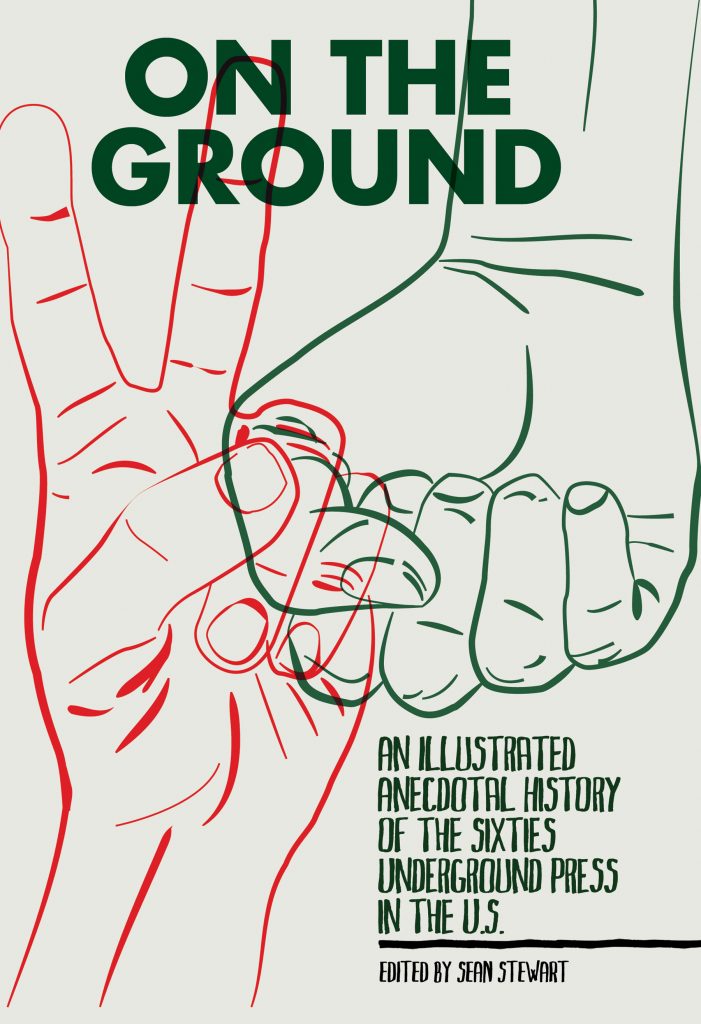by Abe Pack
Logos
July 2013
An excerpt from Review Essay: The Life and Times of the Underground Press
On The Ground: An Illustrated Anecdotal History of the Sixties Underground Press in the U.S.,[32] embraced the oral-history recollections of numerous participants. Editor Sean Stewart, a native Jamaican who’d curated a 2009 underground press exhibit in the San Francisco bookstore/gallery he then owned, produced what his publisher said was “neither meant to be an official nor comprehensive history.”[33] Stewart wanted to remain “faithful to the established historical narrative.” But, as he said, “my focus is strictly on the atmospherics—trying to get a handle on what things were like day-to-day in the underground press.”[34]
Stewart does succeed in re-animating the ethos of the underground press experience. A nice editing job distributed reminiscences by rough chronology and key topics: “participants or reporters,” design, distribution, sectarianism, repression, burnout and legacy. Interviewees accentuated the positive; few were disillusioned. There was nostalgia, and PG-13 eliding of coups and correctness—but also a sense of accomplishment and a continuing feistiness about having confronted war-makers and bigots. Here’s Thorne Dreyer of the Texas papers Rag and Space City—still an activist—summing up in Stewart’s “Legacy” section.
Everybody all felt like they
were changing the world…There were phenomenal changes happening. We were
also delusional in lots of ways. We saw revolution—a total
revolution—and our goals were so large that anything that happened would
have fallen short…
We created institutions that were reflective of
what we believed…and the underground press was the most significant of
those.[35]
On The Ground’s liveliness is reinforced by perhaps 100 covers, comix, illustrations and photos. As Jonah Raskin, a biographer of ‘60s Yippie activist Abbie Hoffman, has noted, these illustrations could be at once dynamic, sexist and violent. But, Raskin added, Stewart’s array “comes closer than [McMillian’s and Wachsberger’s books] to the spirit of the in-your-face underground papers.”[36]







